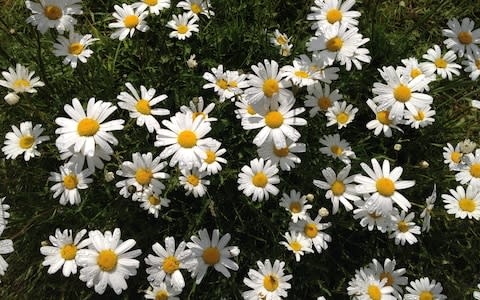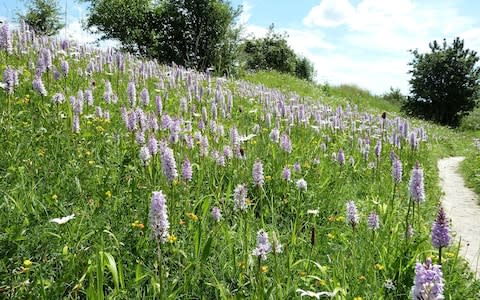Wildflower verges designed to help bugs could backfire because councils are using non-native species, charity warns

Councils attempting to plant eco-friendly wildflower verges could be inadvertently harming butterflies, beetles and bees, a charity has warned, because they are sowing foreign seeds.
Plantlife has urged local authorities to let British native wildflowers grow on verges, and pointed out many colourful plants including orchids and oxeye daisies are available and better for native fauna.
Dr Trevor Dines, a plant specialist and spokesperson for the charity, said that natural wild verges can support 1,400 species of insect whereas the seed mix can only support a maximum of 40 species.
One council, Rotherham, was praised by many for its "eco-friendly" wildflower scheme, after seeds were sown across its verges.
However, these were from a seed mix and feature plants which are not native to Britain, with native plants not allowed to grow.
The flowers include the European poppy, California Poppy, Cornflower and Corn Marigold.

This is happening across the country, Dr Dines said. Plantlife is currently working with local councils in rural areas to encourage them to let verges grow naturally.
He explained: "We should let the native flora do the job for us or use natural seeding if they are not there, so we bring seed in from a species rich wildflower meadow to bring back the native species to our verges, parks and gardens.
"These seed mixes that people are using - you have to herbicide the ground each year, clear them away, and buy a mix of seeds to sow each year as all these plants are annuals."
Not only does this leave little chance for native plants to grow, it also is not ideal for pollinators and other bugs.
He added: "In the spring, there is some research that shows pollinators definitely prefer native plants, dandelions, celandines, hawthorn and early flowering trees.

"All the different insects and invertebrates are important to consider too, natural wild verges can support 1,400 species of insect whereas the seed mix can only support 40 species max.
"We aren't providing that by just sowing these colourful mixes of pollinator plants.
"These are things like aphids and beetles, butterflies and moths, caterpillars,
"It's only by doing that with native species that you get that mixture of life coming in."
A Rotherham Council spokesperson said: “Rotherham Council's wildflower verges are maintained over a two year growing cycle. At the end of the first growing year the wildflowers are allowed to produce seed and are then cut down, seeded, then germinated the following year to provide a second year’s display.
“At the end of the second year the growth is again cut back, and as part of preparing the surface to an acceptable level for subsequent seed germination, weed killer is required to remove weeds and ensure the seeds have the best chance of growth. Without this process the flower displays would not thrive and this is standard practice for displays of this type.”

 Yahoo News
Yahoo News 
